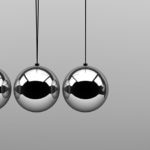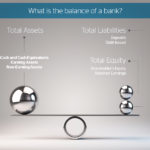What is a bank’s BALANCE SHEET?
A bank is not like any other company. Its main activity consists of using money from savers to lend to those requesting credit. This means that a bank’s balance sheet is somewhat different from a company that is not a financial institution. To be sure you’ve got it clear, we have summarized the main characteristics of a bank’s balance sheet below.


Like any other company, a bank’s balance sheet consists of three parts:
- Assets
- Liabilities
- Equity
But banks do not operate like regular companies do. Their main function is to attract funds from savers and lend them to those applying for a credit or loan.
Therefore, part of a bank’s ASSETS is the money it loans, but this is not their money. It belongs to the savers. It owes it to them. This represents its LIABILITIES.
To go into detail, it’s important to know that a bank’s ASSETS include three things: CASH AND CASH EQUIVALENTS, EARNING ASSETS and NON-EARNING ASSETS.
- CASH AND CASH EQUIVALENTS are the funds each bank deposits in the central bank that can be immediately converted into cash.
- EARNING ASSETS are the total of all the credit and loans granted. It also includes a bank’s securities portfolio such as stocks, public or private debt, derivatives, etc.
- Finally, NON-EARNING ASSETS include all the necessary infrastructure for a bank to function, from buildings and branches to IT systems and furniture.
On the other side of the balance sheet, LIABILITIES also includes the different ways a bank finances its activities, through customer deposits and issuing debt.
Now that we know what the ASSETS and LIABILITIES are, let’s look at EQUITY.
EQUITY mostly includes the bank’s own resources. It consists of shareholders’ contributed capital and retained earnings.
Now that we are familiar with the concepts, the numbers have to balance. The BALANCE SHEET is just a matter of adding LIABILITIES plus EQUITY. The result must be the same as the TOTAL ASSETS.